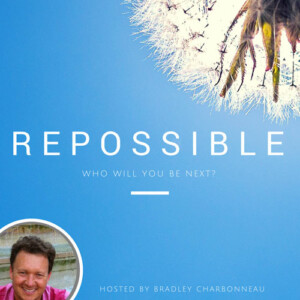
Are you sure you know the target audience for your book? Are you open to new audiences?

I thought I knew the target audience of my book. Maybe I could broaden it.
It’s not that I need to “fix” anything, but that I could do well by adding in other audiences or “reader avatars” that I hadn’t really thought of. Here’s a review I got on Amazon the other day (which, by the way, thrilled me to no end):
A very good “how-to” book for change, inspiration, and getting past procrastination.
This author has provided an excellent “how to” book, to move past procrastination, and getting past fear – teaching the reader how things made habitual can result in transformational success. This book could be a really important read for the new, young person looking to “start” his life journey, or switch directions after a rocky start. His writing is humorous, friendly, and engaging. I have bought two copies – one for both of my adult children. — Robert Enzenauer (on Amazon)

Every Single Day: Daily Habits to Create Unstoppable Success, Achieve Goals Faster, and Unleash Your Extraordinary Potential
As an author, you often write with yourself in mind as the target audience. In this case, I tried to write with the Bradley Charbonneau of October 31, 2012 in mind–the day before I decided to change my life.
That poor soul was sad, lacked confidence, and was just about ready to give up and give into the myth that “Oh well, I guess the dreams I had for my life will have to wait until my next life.”
I make several references in the book to the nine lives of a cat. I’m pretty sure I haven’t actually had any feline readers just yet (but then again, my book will be coming out on audio soon, so there’s that), so I’m not sure that we can rely on those future eight other lives to then live the one that you didn’t live this time around.
But I’m betting that most of my audience is human. Most of them probably only have one life or at least one life as this person in this body. So with that, what are we going to do with it?
I very much appreciate how Mr. Robert Enzenauer suggests that “This book could be a really important read for the new, young person looking to “start” his life journey, or switch directions after a rocky start.” because, again, I was thinking more of the “second chance” or “second time around” after you’ve had a run at a life that maybe was just fine, but you’re ready for a new chapter in your life. Or maybe a new section. Or just an entirely new book.
But what if young people were to read it and just skip the ten years (that’s a long time for someone who’s only lived two decades or so) of fretting about not living the life they think they ought to live and just get down to business and start living the life they want to live right then and there.
I like to think that if I read my own book when I was 21 that I would have done things differently. Even at 31.
But that’s part of what I poke at in the book: when is the “best time” to make that shift, to pivot, to change from where you are (or who you are) to head down a different path? What’s it going to take? I try to help you not wait for death or disease or tragedy but to live your life as if those things maybe already happened and you already learned the lessons associated with them.
Ah yes, but there’s that “experience” thing. I’m fully aware that sometimes, you just have to make the mistakes yourself before you learn to not make them anymore.
But what if you could condense that learning period to a shorter amount of time? Not ten years of “dreaming your dream” (and not living it), but, I don’t know, three or five? What does time have to do with any of this anyway?
Why wait any years?
Read the book. Then change your life today. Not tomorrow. Today.
There. I said it. If you’re a “young person” and you read my book, please connect with me. No, really.




























